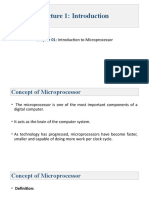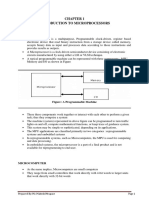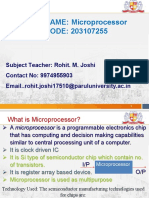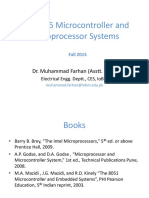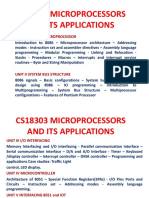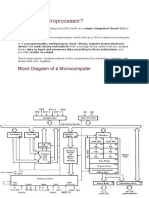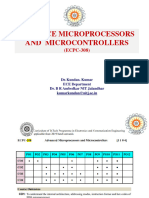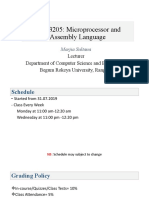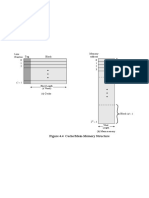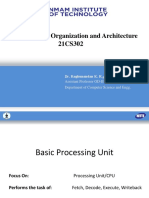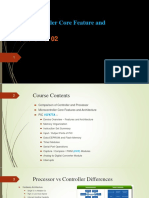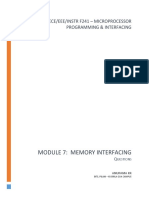0% found this document useful (0 votes)
31 views49 pagesMP Unit I Lecture1 Introduction
The document provides an introduction to microprocessors, detailing their role as the central processing unit of microcomputers and their evolution in speed and capability. It outlines the basic functions of a microprocessor, characteristics such as clock speed, word length, and data handling, and discusses the history of Intel microprocessors from the 4004 to the Core 2/Quad. Additionally, it highlights the significance of microprocessors in digital computing and their impact on technology advancements.
Uploaded by
nivahem609Copyright
© © All Rights Reserved
We take content rights seriously. If you suspect this is your content, claim it here.
Available Formats
Download as PPTX, PDF, TXT or read online on Scribd
0% found this document useful (0 votes)
31 views49 pagesMP Unit I Lecture1 Introduction
The document provides an introduction to microprocessors, detailing their role as the central processing unit of microcomputers and their evolution in speed and capability. It outlines the basic functions of a microprocessor, characteristics such as clock speed, word length, and data handling, and discusses the history of Intel microprocessors from the 4004 to the Core 2/Quad. Additionally, it highlights the significance of microprocessors in digital computing and their impact on technology advancements.
Uploaded by
nivahem609Copyright
© © All Rights Reserved
We take content rights seriously. If you suspect this is your content, claim it here.
Available Formats
Download as PPTX, PDF, TXT or read online on Scribd
/ 49


